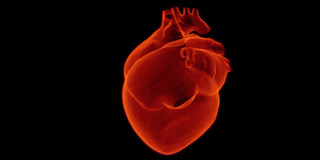This course examines the basic mechanisms responsible for our ability to hear. Humans are able to distinguish a remarkable range of sounds and hearing provides us with a unique source of information about what is occurring in our immediate surroundings.
Our sense of hearing depends entirely on the sensory receptors of the inner ear known as hair cells. Hair cells are extremely vulnerable and can be affected by disease, ageing and over-exposure to loud noise. Once destroyed, they do not regenerate. In this course we describe in detail the function of the cochlea, which is where the hair cells are located. We learn how sound energy is transduced into electrical signals and how a rapid-fire code of electrical impulses about the physical characteristics of a particular sound is sent to the brain. The brain interprets these signals as a musical phrase, a human voice or any of the range of sounds in the world around us at a particular moment.
We also examine the central auditory nervous system pathways and describe the physiological mechanisms responsible for our sense of pitch and loudness and our ability to localise the source of a sound stimulus. Finally, we look at the main types of hearing impairment and their causes, effects and rehabilitation.
Learning outcomes
After studying this course, you should be able to:
- distinguish between the major anatomical components of the outer, middle and inner ear
- describe the function of the outer, middle and inner ear
- describe the structure of the cochlea
- describe the structural arrangements of the organ of Corti and the function of the basilar membrane
- decribe the main causes of hearing impairments and the methods used to rehabilitate hearing-impaired individuals.
Course Curriculum
| 1. Sound reception | |||
| Sound reception: the ear | 01:30:00 | ||
| 2. Structure and function | |||
| Structure and function of the outer and middle ear | 01:30:00 | ||
| 3. The structure and function of the inner ear | |||
| The anatomy of the cochlea | 01:30:00 | ||
| The role of the basilar membrane in sound reception | 01:30:00 | ||
| The organ of Corti and hair cells | 01:30:00 | ||
| Neural transduction | 01:30:00 | ||
| Synaptic transmission from hair cells | 01:30:00 | ||
| Revision questions | 01:30:00 | ||
| 4. Neural processing | |||
| Neural processing of auditory information | 01:30:00 | ||
| 5. Frequency coding in cochlear nerve fibres | |||
| Place code | 01:30:00 | ||
| Frequency code | 01:30:00 | ||
| 6. Intensity coding | |||
| Firing-rate hypothesis | 01:30:00 | ||
| Number of neurons hypothesis | 01:30:00 | ||
| 7. The central auditory nervous system | |||
| The ascending auditory pathway | 01:30:00 | ||
| Coding of information in the higher auditory centres | 01:30:00 | ||
| The ‘what’ pathway | 01:30:00 | ||
| The ‘where’ pathway | 01:30:00 | ||
| Revision Q’s and Summary | 01:30:00 | ||
| 8. Psychophysics | |||
| Auditory perception | 01:30:00 | ||
| Psychophysics | 01:30:00 | ||
| Method of limits | 01:30:00 | ||
| Differential sensitivity | 01:30:00 | ||
| Weber’s Law | 01:30:00 | ||
| 9. The perception of intensity | |||
| Absolute thresholds | 01:30:00 | ||
| The relationship between loudness and intensity | 01:30:00 | ||
| 10. The perception of frequency | |||
| The relationship between frequency and pitch | 00:30:00 | ||
| Frequency discrimination | 01:30:00 | ||
| Frequency selectivity | 01:30:00 | ||
| A masking experiment | 01:30:00 | ||
| Signal duration | 01:30:00 | ||
| 11. Sound localisation | |||
| Localisation of sound in the horizontal plane | 01:30:00 | ||
| Interaural time delays: non-continuous sounds | 01:30:00 | ||
| Interaural time delays: continuous tones | 01:30:00 | ||
| Interaural intensity differences | 01:30:00 | ||
| Revision and Summary – Sound Localisation | 01:30:00 | ||
| Acknowledgements – Hearing Course | 00:30:00 | ||




